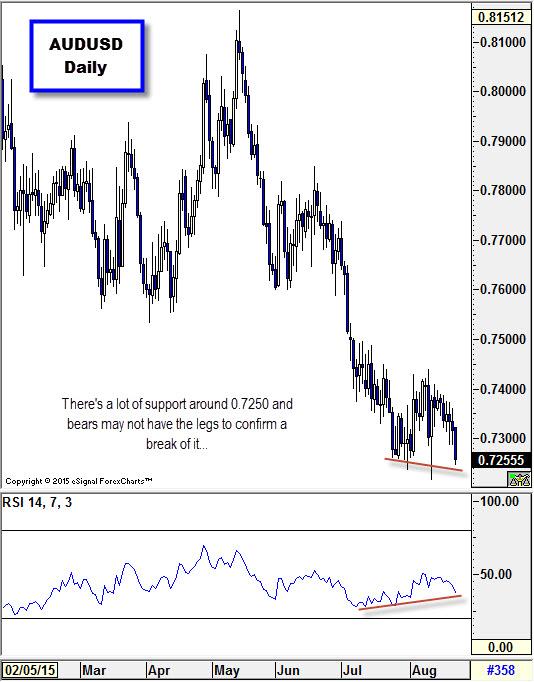![]()
It has been a very volatile start to the week in Asia, with risky assets taking a battering. Investor sentiment has been shattered, with the final blow coming last Friday from a big sell-off on Wall Street. Furthermore, equity futures are red across the board and those that have opened are drowning. NZ stocks were the first to open and they were immediately assaulted by bears as investors piled into bonds and other safe haven assets.
The ASX 200 and the Nikkei 225 are around 1.8% and 2% lower respectively at the time of writing, while bond yields also fall in their respective home countries. In the FX market the aussie and the kiwi have been mauled by bears once more as traders flee to the yen and US dollar.
The widespread sell-off of risk assets is being fuelled by fears for China’s economy, after a string of soft data releases and extreme volatility in its stock market. Beijing has been unable to calm investor sentiment and mass easing has thus far failed spur economic activity or restore consumer and corporate confidence. The situation came to a head on Friday with the release of some very sad manufacturing numbers:
- Caixin’s manufacturing PMI for August deteriorated for the sixth straight month, falling to a 77-month low at 47.1. This indicates that sentiment amongst China’s private sector manufacturers is toxic, which doesn’t bode well for the overall health of the economy or for risk assets.
What’s next?
Trying to buy equity markets and other risky assets at the moment is being likened to attempting to catch a falling knife. This may keep a lot of short-term bulls on the sidelines as they await a better entry point, although from a long-term perspective equity markets may look somewhat attractive, particularly those that have been in the red for a while, like the ASX 200.
AUDUSD tests the all-important 0.7250 level
Given the aussie’s risky, commodity-backed credentials, it’s not surprising that it’s facing the brunt the sell-off, with AUDUSD falling around 50 pips in this morning session. The pair is now testing an all-important support zone around 0.7250, which is around the pair’s six-year low. A break here could encourage a test of 0.7000. On the upside, the pair looks capped around 0.7450 in the near-term.
Source: FOREX.com
Recommended Content
Editors’ Picks
EUR/USD holds below 1.0750 ahead of key US data

EUR/USD trades in a tight range below 1.0750 in the European session on Friday. The US Dollar struggles to gather strength ahead of key PCE Price Index data, the Fed's preferred gauge of inflation, and helps the pair hold its ground.
USD/JPY stays firm above 156.00 after BoJ Governor Ueda's comments

USD/JPY stays firm above 156.00 after surging above this level on the Bank of Japan's decision to leave the policy settings unchanged. BoJ Governor said weak Yen was not impacting prices but added that they will watch FX developments closely.
Gold price oscillates in a range as the focus remains glued to the US PCE Price Index

Gold price struggles to attract any meaningful buyers amid the emergence of fresh USD buying. Bets that the Fed will keep rates higher for longer amid sticky inflation help revive the USD demand.
Bitcoin Weekly Forecast: BTC’s next breakout could propel it to $80,000 Premium

Bitcoin’s recent price consolidation could be nearing its end as technical indicators and on-chain metrics suggest a potential upward breakout. However, this move would not be straightforward and could punish impatient investors.
US core PCE inflation set to signal firm price pressures as markets delay Federal Reserve rate cut bets

The core PCE Price Index, which excludes volatile food and energy prices, is seen as the more influential measure of inflation in terms of Fed positioning. The index is forecast to rise 0.3% on a monthly basis in March, matching February’s increase.
